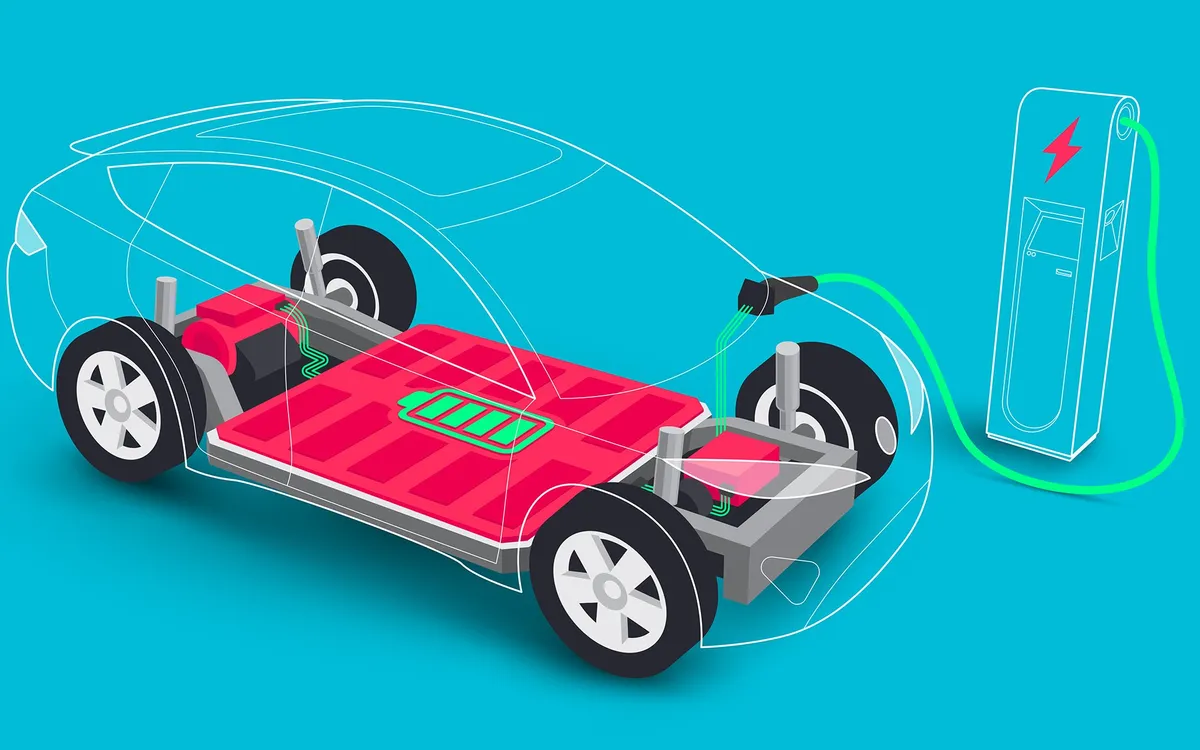
As more electric vehicles hit the roads, the environmental impact of their battery production will also increase. This raises a major question: What type of EV battery will be the most environmentally friendly on a large scale?
A study published 1 February in IEEE Access suggests that, after considering five different types of EV battery cells, lithium-sulphur cells will be the most environmentally friendly. The results also suggest that cells that don’t rely on precious and critical metals are fundamental for ensuring sustainable production.
The most common EV battery today is the lithium-ion cell. But many other batteries are being developed, tested, and are slated to hit the market in the next few years. Each one involves different pros and cons when it comes to energy density and the environmental impacts of its production and use.
Batteries that have silicon in their anodes—such as silicon-polyacrylonitrile (SiCPAN) and silicon nanowires (SiNWs) cells—have much greater energy density than traditional lithium-ion cells, which are made with graphite anodes. However, these silicon-based cells currently require the incorporation of precious metals, such as silver, to help stabilize them during charging and discharging.
Another option is the use of all-solid-state cells, which offer nearly double the energy density of the best-performing lithium-ion batteries, resulting in a smaller and lighter battery pack. However, this technology also requires the incorporation of precious metals.
Lastly, lithium-sulphur cells are emerging as promising battery for EVs because they have theoretically high capacity and energy density—without containing rare earth metals. Despite that advantage, more technology advancements are needed to realize the full potential of these cells.
Antonella Accardo is a research fellow at the Polytechnic University of Turin, in Italy, and a member of the university’s interdepartmental Center for Automotive Research and Sustainable mobility (CARS) center. Accardo was interested in comparing the environmental impacts of these EV batteries if the manufacturing of each was scaled up to industrial levels.
To do so, her team conducted environmental impact assessments of SiCPAN, SiNWs, all-solid-state, and lithium-sulphur cells, compared to the conventional lithium-ion cell. “We selected [these] cells as current representatives of the most promising technologies for the automotive market in the next decades,” explains Accardo. “The cells were identified based on their suitability to meet the performance and safety requirements of electric vehicles.”
They conducted a novel “cradle-to-gate“ prospective life cycle assessment, which looks at the full impact of each cell over the course of its production from sourcing the raw materials to the point the end product leaves the factory. Specifically, the researchers analyzed the cells in terms of their impact on six criteria: climate change, or total greenhouse gas emissions during production; acidification, or emissions of sulfuric and nitrogen oxides that acidify water and soil; eutrophication of fresh water, or potentially harmful accumulation of algae and sediments in freshwater systems; ecotoxicity of freshwater, or the release of toxic substances into freshwater systems; the use of fossil fuels in production; and the depletion of mineral and metal reserves.
The results suggest that, overall, lithium-sulphur cells are the most environmentally friendly EV battery. Lithium-sulphur outperformed the standard lithium-ion battery in four out of six of the key environmental impact categories assessed (all but climate change and use of fossil fuel resources).
However, the lithium-ion cell remains the best in terms of cradle-to-gate impact on climate change, accounting for 30.9 kilograms of emitted carbon dioxide per kilowatt-hour generated, followed by the SiCPAN cell. The all-solid-state and SiNW cells had two and three times as much carbon dioxide emissions, respectively, as a lithium-ion cell.
The SiNW cells were found not only to have the worst impact in terms of climate change, but also many other categories assessed in the study, including acidification, use of fossil fuel resources, acidification and eutrophication of freshwater. This is predominantly due to the fact that SiNWs involve the use of substantial amount of precious metals (such as the silver nitrate used as catalyst) and energy-intensive nanoscale manufacturing processes, which also release toxic byproducts.
Interestingly, the researchers also conducted a “what-if” analysis the explore the impact of SiNW, SiCPAN, and all-solid-state cells if they could theoretically be produced without precious metals. In such a case, all-solid-state cells produced without silver would be the least impactful cell among all of the next-generation cells considered in this study.
Ezio Spessa is professor in the department of energy at the Polytechnic University of Turin and a member of the executive board of the CARS center who supervised and coordinated this study. He notes that these results really underscore the fact that the environmental impact of batteries depends strongly on their material composition.
“Our recommendation is to continue researching the best solution in terms of performance and costs, while keeping an eye on the environmental benefits already at this stage,” he says.
Next, Spessa says his team plans to investigate whether these results differ between the individual cell level to battery pack level. They will also explore the impact of using recycled materials instead of newly resourced materials in cell production.
